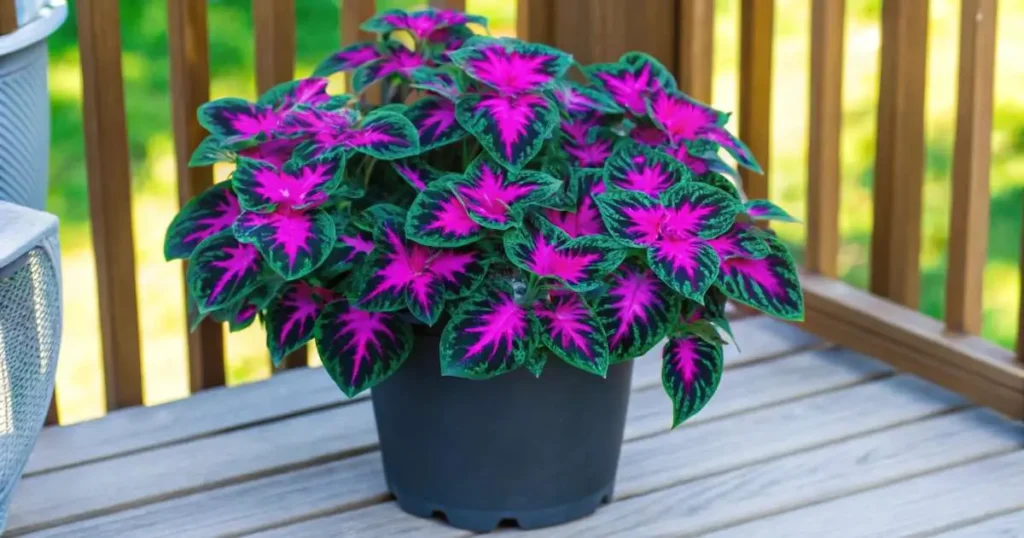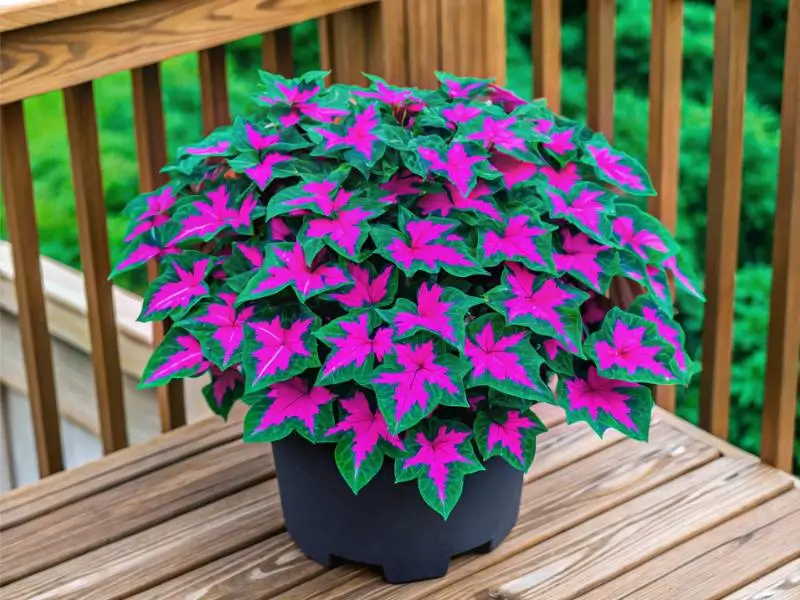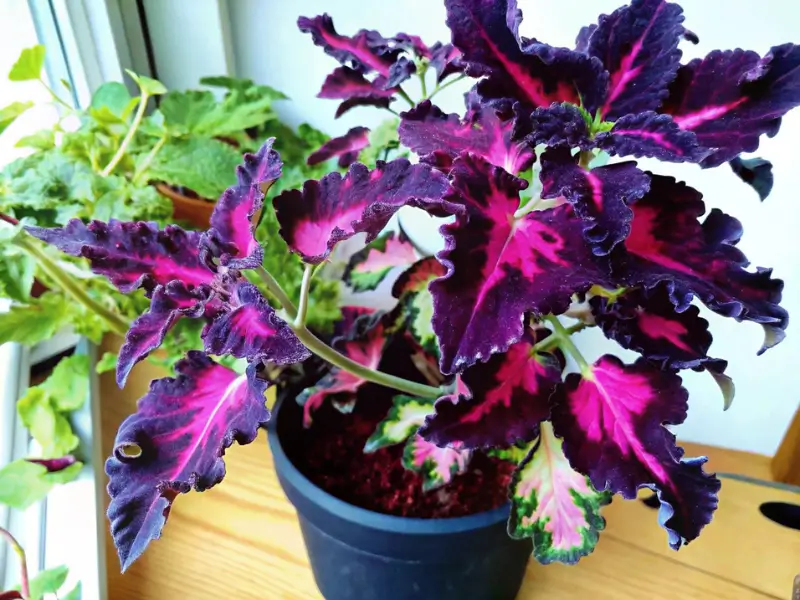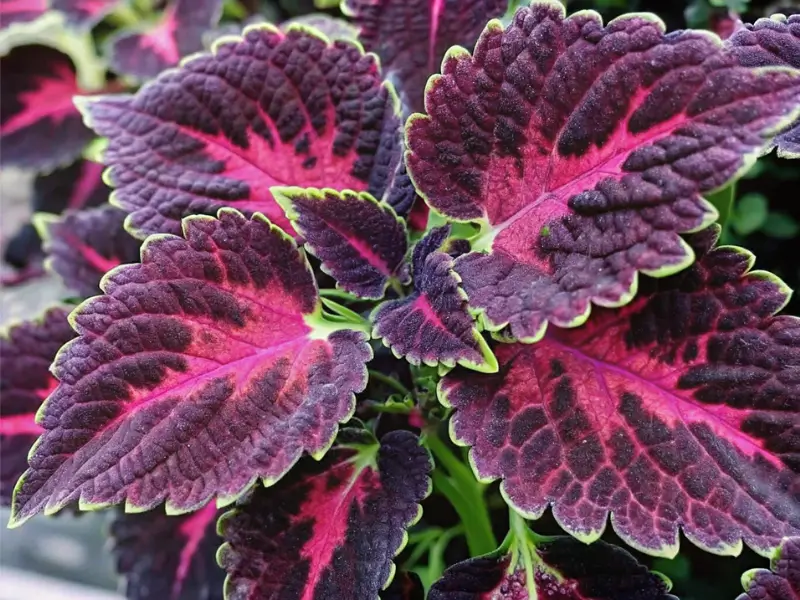
In This Article
Introduction to the Black Dragon Plant
Understanding the Name
I first saw the phrase “black dragon plant” online and was instantly intrigued.
Short bullet points to break it down:
- It’s often linked to Dracaena species.
- Some call it “Dracaena Black Knight” or “Black Magic.”
- Leaves appear almost black in certain light.
Those near-black leaves really stand out among typical bright-green houseplants. I once placed mine next to a yellow pothos, and the contrast looked wild. Honestly, I think that’s precisely why folks are drawn to it.While many “dark-leaf indoor plant” varieties exist, this one is prized for its dramatic appeal. Also, it tends to be fuss-free. That’s a win-win in my book.
Historical Background and Origins
The Dracaena family, native to Africa and Asia, thrives in warm, humid climates. Black Dragon Plant is one of the popular varieties, known for its striking dark leaves. These plants have been around for ages and are now trending thanks to their tough, low-maintenance nature. Once a niche choice, dark-leafed plants are now a go-to for adding an exotic touch to indoor spaces.
Key Characteristics of the Black Dragon Plant
Distinctive Features and Appearance
If you’re drawn to dramatic houseplants, this one scores high marks. Its leaves are long and tapered, creating a sleek, sword-like silhouette. In many lighting situations, they’re so dark that they can appear nearly black, offering a hint of the unexpected. When a ray of light hits the leaf surface, there’s a subtle shine, adding to its moody charm.
- Deep, smoky leaves that can look almost black
- A noticeable sheen in indirect light
- Compact size suitable for smaller indoor spaces
If you’re hunting for “rare black leaves,” black dragon plant delivers. Even a slight shift in lighting can reveal variations—from near-obsidian to a muted dark green—keeping things visually interesting.
Growth Pattern and Life Cycle
Instead of racing upward like some trailing varieties, this Dracaena grows at a relaxed pace. During warmer months, you’ll see new leaves sprouting more frequently, while cooler seasons usually slow things down. If older leaves turn yellow or drop, it’s simply cycling out the old to make way for new foliage. A quick trim keeps it looking fresh. With consistent basic care, the black dragon plant can be a lasting companion, bringing its bold aesthetic into your home for years to come.
Varieties and Synonyms of the Black Dragon Plant

Popular Cultivars and Related Species
Dracaena is a pretty big family. You might already know about:
- Dracaena marginata (long, spiky leaves).
- Snake Plant (once called Dracaena trifasciata).
- Dracaena reflexa (bright, variegated leaves).
All these share the same general resilience and preference for moderate watering. Meanwhile, you’ll encounter various names for the dark-leaf version, like “Black Knight,” “Black Magic,” or Black Dragon Plant. These names all refer to the same moody, decorative plant designed to stun onlookers. If you want variety, consider collecting different cultivars to add flair to your space.
Rare Black Varieties and Coloration Tips
Looking for a black-hued houseplant beyond Dracaena? You could explore black philodendrons or rubber plants. Yet the black dragon plant is simpler to handle, partly because Dracaenas aren’t as fussy about humidity or feeding routines.To maintain a dark leaf color:
- Give bright, indirect light.
- Avoid scorching midday sun.
- Use a balanced fertilizer for foliage in spring/summer.
I rotate my pot every so often. That’s a tiny step, but it helps all sides receive light, preserving that uniform coloration.
Ideal Growing Conditions for the Black Dragon Plant
Soil Requirements and Drainage
When I’m potting my Black Dragon Plant, I rely on:
- Well-draining potting mix with perlite.
- A container with a drainage hole.
- Light tapping of the soil to remove air pockets.
Excess moisture is bad news, leading to root rot. I remember overwatering my first Dracaena and discovering the roots had turned mushy. Yikes! So now, I’d rather let the soil dry slightly than keep it overly damp.Placing a thin layer of pebbles at the base of the pot can help keep the roots above standing water. But if you have a solid mix, that might not even be necessary. Just check that the pot doesn’t stay soggy.
Light, Temperature, and Humidity Needs
Position the black dragon plant in bright, indirect sunlight. Direct scorching rays? Not so good. If leaves get crispy edges, consider using curtains or shifting it a few feet away from the window.
The ideal temps fall between 65–80°F. If you suspect cold drafts, move it to a cozier spot.
In terms of humidity, moderate conditions are usually enough. Still, if your home’s super dry, a small humidifier can help. I had an issue one winter when the heat was on 24/7, causing leaf tips to brown. A quick humidity fix improved that right away.
Planting and Propagation Techniques

Best Propagation Methods
If you’d like more of these striking plants, especially the Black Dragon Plant, propagation is pretty straightforward:
- Take a cutting with 2–3 leaves.
- Place it in water or a well-draining mix.
- Keep it warm and be patient.
Roots usually show up in a few weeks. If the ends get slimy, just refresh the water or snip off the mushy parts. I’ve used rooting hormone before, but honestly, Black Dragon Plant cuttings often root just fine without it. My favorite part? Gifting these little plant babies to friends. Everyone’s surprised such a dramatic-looking plant is so easy to share!
Step-by-Step Guide to Successful Transplanting
If you’re moving an established black dragon plant to a bigger pot:
- Choose a pot 1–2 inches wider.
- Loosen the root ball gently.
- Add fresh soil mix, then place the plant in.
- Water thoroughly to help it settle.
I give mine a week or two of minimal disturbance afterward. If leaves start drooping, I check for watering frequency and ensure the soil isn’t oversaturated. Generally, with good drainage, your plant bounces back fast.
Care and Maintenance for Healthy Growth
Watering Schedule and Fertilization
With my Black Dragon Plant, I water only when the top inch of soil feels dry—usually every 10–14 days. It’s easy to overdo it, and soggy soil can lead to root issues.
For feeding, a balanced fertilizer once a month in spring and summer works well. I skip it in winter. Too much can burn the tips, so with this plant, less is definitely more.thrives with a light touch. Too much fertilizer can lead to crispy, brown leaf tips—often a sign of overfeeding or mineral buildup in the soil.
Pruning, Grooming, and Leaf Care
For my Black Dragon Plant, I trim any dead or damaged leaves at the base to keep it tidy. A quick wipe with a soft cloth helps the dark leaves shine and absorb light better. If tips turn brown, switching to filtered water or letting tap water sit overnight can help, especially in areas with high chlorine. A little grooming goes a long way and honestly feels like bonding time with your plant.
Common Pests and Diseases
Identifying Common Insects and Fungal Infections
Dracaenas like the Black Dragon Plant usually have pest-resistant foliage, but they’re not totally immune. Watch for:
- Mealybugs – cottony clusters near leaf joints
- Spider mites – fine webbing or tiny speckles on leaves
- Scale – small brown bumps along stems
Too much moisture or leaves staying damp can trigger fungal issues. Dark spots that spread slowly are a red flag. Keep the plant dry and airflow steady to prevent these problems.d early fungal signs and ended up with half the leaves affected. Lesson learned!
Preventive Measures and Organic Remedies
Prevent problems by:
- Ensuring good airflow around the pot.
- Cleaning leaves regularly.
- Avoiding excessive water.
If pests strike, isolate the plant from others and use insecticidal soap or neem oil. I prefer organic solutions because I don’t want strong chemicals in my living space. If fungal issues show up, reduce watering, and remove infected foliage. You can also adjust the environment or potting mix to limit future outbreaks.Catching any problem early is super important. Regular check-ins, maybe once a week, can keep your black dragon plant in tip-top shape without much drama.
Decorating with the Black Dragon Plant

Indoor Uses for an Exotic Aesthetic
I love using houseplants for their visual impact, and the black dragon plant is near the top of my list.
Try these ideas:
- Place it against a white wall for bold contrast.
- Pair it with brighter plants to highlight its darkness.
- Put it in a decorative pot that matches your décor theme.
Because of its compact growth, it’s easy to tuck it onto a shelf or desk. Plus, it adds a mysterious flair that guests can’t help but notice. I’ve had people ask me if the leaves are painted—which definitely makes me chuckle.
Outdoor Landscaping Ideas and Pairings
In mild climates, Dracaenas can thrive outside, especially in partial shade. Grouping them with bright flowering shrubs can really make that dark foliage pop.
Consider:
- Spotty morning sun, then shade in the afternoon.
- Protective cover from heavy rain or strong winds.
If your winters get cold, move the plant indoors before the temperature drops too low. Many folks shuttle their Dracaenas inside and out with the seasons, letting them soak up natural light in warm months. It’s a clever way to enjoy this garden accent plant year-round.(You can dig into more general planting guidance at the USDA’s farming page if you want extra references.)
FAQ
How Often Should I Water My Black Dragon Plant?
Water when the top inch of soil feels dry—usually every 1–2 weeks, depending on season and home temperature. If leaves start yellowing or drooping, that could hint at overwatering. Let things dry a bit, and always let excess water drain.
Does the Black Dragon Plant Thrive Indoors Only?
Nope! It can handle outdoor living if you have warm, humid conditions. Partial shade works best. Just bring it inside before chilly weather. Because it can handle both indoor and outdoor conditions, it’s a highly versatile houseplant companion.
Can the Black Dragon Plant Survive in Low Light?
Yes, but the leaves may turn more green than black in very low light. Ideally, aim for moderate or bright, indirect light. I’ve placed mine in an east-facing window, and the color remains pretty vibrant.
What Are the Signs of Overwatering or Underwatering?
Overwatering:
Mushy roots
Yellowing leaves
Soil smells musty
Underwatering:
Crispy leaf edges
Very dry, pulled-away soil
Slow leaf growth
A quick soil poke test helps you avoid both extremes and keeps your plant balanced.

6 thoughts on “Black Dragon Plant: The Ultimate Care and Growth Guide”
Comments are closed.